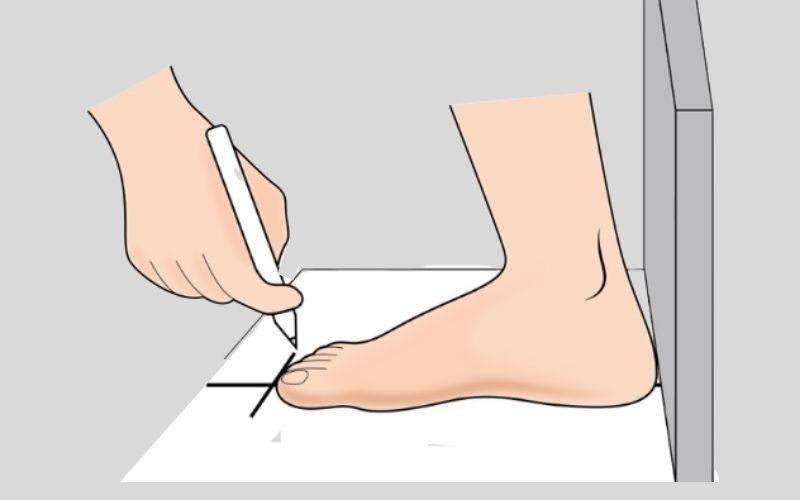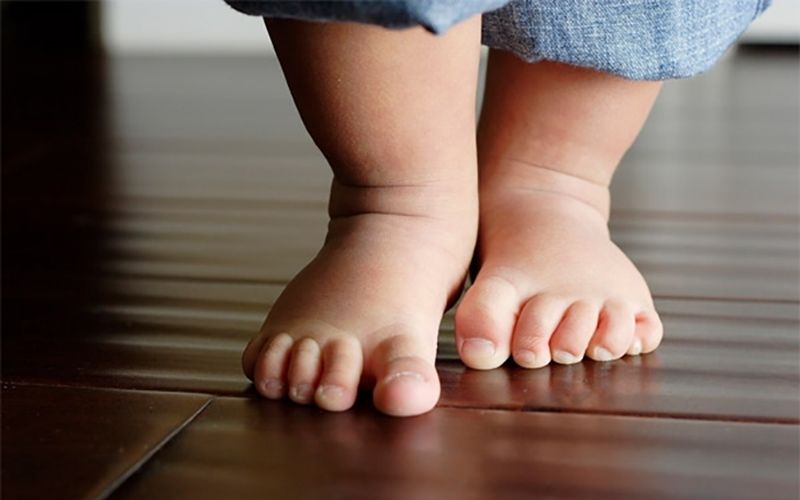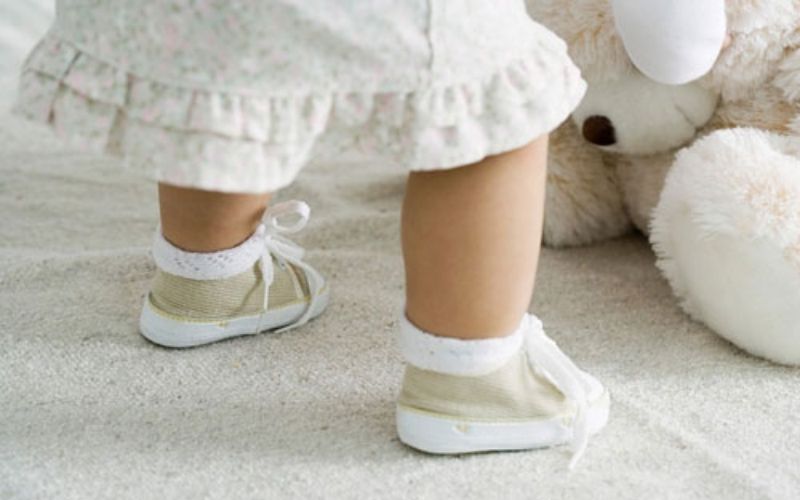Choosing the perfect pair of shoes for your little one is essential to support their growing feet and ensure all-day comfort as they play and explore. This guide will help you navigate the process, starting with accurately measuring your child’s foot and selecting the right shoe size.
1 How to Select the Correct Shoe Size for Your Child
To measure your child’s foot accurately, you’ll need the following tools:
- A4 paper
- Pencil
- 30cm ruler with millimeter markings
 Measuring foot length
Measuring foot length
For newborns:
- For babies who haven’t taken their first steps yet, measuring their feet while they sleep is the most accurate method. Gently extend their toes and use a ruler to measure the length from the big toe’s tip to the heel. Make a note of these measurements.
- Next, measure the width of their foot from the outer edge of one side to the other, and record these numbers as well. Now you have a complete set of foot measurements for your newborn.
 Determining foot size for toddlers
Determining foot size for toddlers
For toddlers who can walk:
- Ask your child to stand straight and place one foot on a piece of A4 paper against a wall, making sure their foot stays within the paper’s boundaries.
- Mark the highest point of their toe and the end of their heel, then measure the length between these two points with the ruler.
Take the measurements you recorded and add an extra 0.5-1cm. Now, compare this adjusted measurement to the size chart provided below.
| Size | Foot Length (mm) | Age |
|---|---|---|
| S | 96 – 108 | 0 – 6 months |
| M | 109 – 115 | 6 – 12 months |
| L | 116 – 125 | 1 – 2 years |
| XL | 126 – 135 | 2 – 3 years |
| XXL | 136 – 145 | 3 – 4 years |
| XXXL | 146 – 155 | 4 years and above |
 Refer to the size chart when purchasing shoes for your child
Refer to the size chart when purchasing shoes for your child
2 Should You Go for Upsize, Downsize, or Truesize?
“Truesize” refers to selecting the precise size of shoes/sandals/clothing, etc. “Upsize” means going one size larger than “truesize,” while “downsize” indicates going one size smaller.
When choosing shoes for your child, it’s crucial to pick the right size to prevent restricting their foot development and causing discomfort from shoes that are too tight.
You don’t have to match the exact size to your child’s foot measurements. It’s recommended to opt for shoes slightly larger, approximately 0.5cm longer than their foot length, to allow for comfortable movement and accommodate growth. Additionally, upsizing can extend the lifespan of the shoes as your child grows.
 Consider upsizing for added comfort and longevity
Consider upsizing for added comfort and longevity
3 Important Considerations When Buying Shoes for Your Child
Look for shoes crafted with breathable materials like cotton to keep your child’s feet cool and comfortable. Steer clear of materials that may trigger itching or skin irritation.
Keep in mind that shoe sizing can vary across different brands and styles, so consider the shoe’s form and stretch when making your decision.
 Pay attention to the shoe’s form and material
Pay attention to the shoe’s form and material
For your convenience, we’ve included additional references:
We hope this guide on choosing the right shoe size for your child has been insightful. By following these tips, you can ensure your little one’s feet are comfortable and properly supported during their early years of exploration and growth.

































